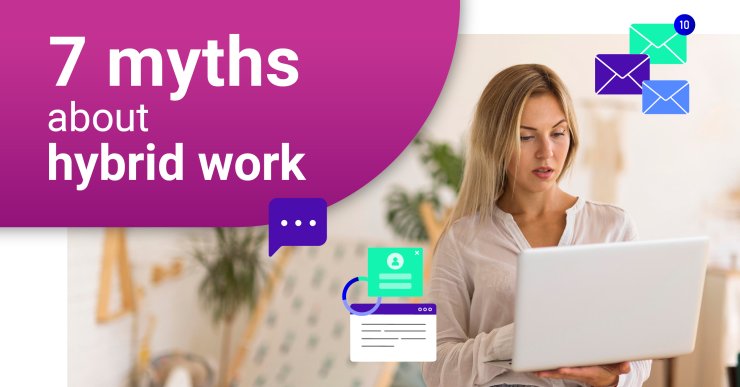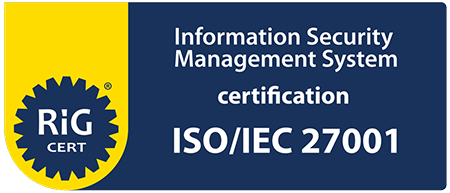01 MYTH
Our existing remote work strategy will work for a hybrid workforce
REALITY:
Hybrid workforce strategies go far beyond remote work. In a true hybrid workforce model, employers and employees agree that business objectives — the goal of achieving the highest levels of productivity and engagement — are what determine where, when and by whom the work gets done.
02 MYTH
Employees are less productive outside the office
REALITY:
Remote workers more often go above and beyond and report higher performance. So the question is no longer whether employees can be productive when working remotely. The question is what you need to provide to employees for them to be productive.
03 MYTH
We need to monitor and measure daily what employees are doing
REALITY:
Employees thrive when given enough flexibility and not when their productivity is constantly supervised. More employees go above and beyond at work when organizations give them a choice over where, when, and how much they work.
04 MYTH
Our jobs just can't be done remotely
REALITY:
Many executives overestimate the number and type of jobs that really cannot be remote because they look only at jobs as a whole, not the composite tasks. The truth is that most jobs fall somewhere on a spectrum between fully portable and fully nonportable. So, it is quite natural that the presence in the office should be determined by the specific tasks to be done.
05 MYTH
We need in-person contact to sustain our culture
REALITY:
Many leaders fear that the lack of in-person contact in a hybrid workforce model will dilute the corporate culture. Yet culture itself isn’t constant; it adapts to dynamics in the organization. Cultural values are changing; orchestrate that change with an open hybrid workforce mindset. Collaboration, agility, and trust are increasingly important cultural values in resilient organizations and don’t relate to physical location.
06 MYTH
A hybrid workforce model duplicates our IT infrastructure
REALITY:
Resilient organizations continuously reengineer their IT strategies and infrastructures anyway and develop “Everywhere Enterprise” strategies — which go beyond enabling a workforce with mobile devices and remote access alone. “Everywhere Enterprises” use technology, team structures, processes, skills, and digital tools to empower dispersed workforces and make them work effectively.
07 MYTH
Hybrid workforce models hurt our diversity, equity, and inclusion strategy
REALITY:
Hybrid workforce models can make it easier to tap a diverse talent pool. Whether the workforce model is hybrid or not, the imperative is to remove unconscious bias in talent recruitment and development and performance management processes and demonstrate inclusion and equity. It is important to listen to your employees. Pulse employee groups about their work experience, and ask what they need from the organization to feel connected and heard.
Source: © 2021 Gartner, Inc. and/or its affiliates.




